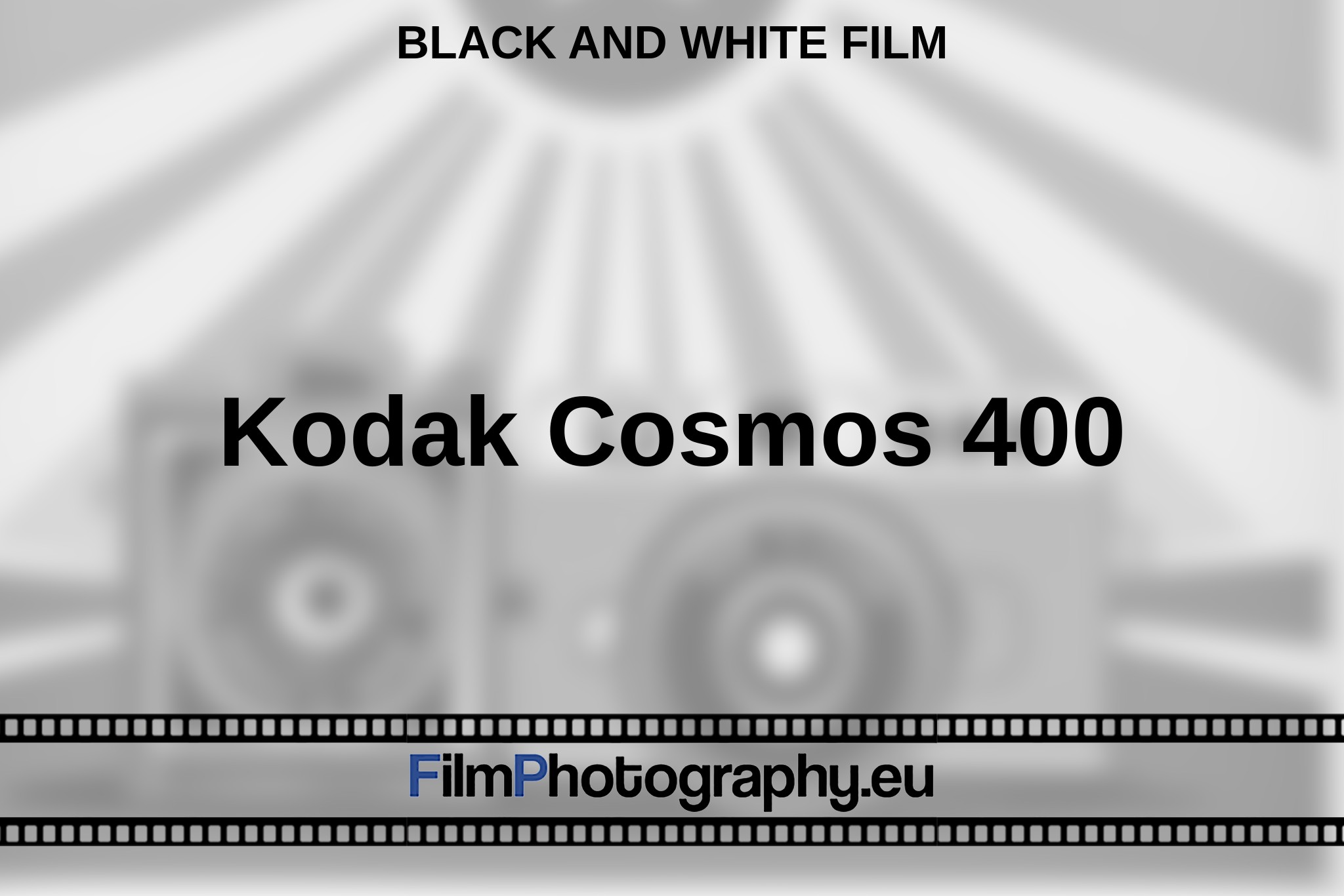The Kodak Cosmos 400 is a black and white film. It dates from the 1990s. The purpose was to document school activities. In the days of digital photography, it was not uncommon for schools to have their own photo labs and darkrooms. These were then used as part of classes or by dedicated clubs.
The Kodak Cosmos 400 makes it possible to create monochrome images. It is panchromatic sensitized. The datasheet gives a sensitivity of ISO 400 for the film.
Using expired film stock
If you can still find a roll of Kodak Cosmos 400 today, it has already passed its expiration date. Of course, this does not mean that you can no longer use the film, but only that the manufacturer guarantees the quality.
Older films can lose light sensitivity, and storage conditions play a crucial role. To avoid underexposure of photos, it may be advisable to set exposure settings to a lower ISO, depending on conditions. The quality of subsequent photos may also be affected by the storage conditions of the unexposed film stock.
For longer storage, a cool and dry place is optimal to avoid deterioration of the quality. It is recommended to develop the film promptly after exposure to prevent possible quality degradation.
Developing the film
Developing the Cosmos 400 requires a black and white developer, a type of development commonly offered by many lab service providers. However, it is also possible to do this yourself at home. There are a variety of film developers available, each with different characteristics.
Development times for the Cosmos 400
| Developer | Dilution | Developer / Water | ISO | Time | Temperature |
|---|---|---|---|---|---|
| D-76 | Stock | 400 | 7:30 min | 18°C / 64°F | |
| D-76 | Stock | 400 | 6 min | 20°C / 68°F | |
| D-76 | Stock | 400 | 5:30 min | 21°C / 70°F | |
| D-76 | Stock | 400 | 4:30 min | 22°C / 72°F | |
| HC-110 (B) | Stock | 400 | 7:05 min | 18°C / 64°F | |
| HC-110 (B) | Stock | 400 | 6 min | 20°C / 68°F | |
| HC-110 (B) | Stock | 400 | 5:30 min | 21°C / 70°F | |
| HC-110 (B) | Stock | 400 | 4:30 min | 22°C / 72°F | |
| T-Max | 1+4 | 400 | 6 min | 18°C / 64°F | |
| T-Max | 1+4 | 400 | 5 min | 20°C / 68°F | |
| T-Max | 1+4 | 400 | 4:30 min | 21°C / 70°F | |
| T-Max | 1+4 | 400 | 4 min | 22°C / 72°F | |
| T-Max RS | 1+4 | 400 | 6 min | 18°C / 64°F | |
| T-Max RS | 1+4 | 400 | 5 min | 20°C / 68°F | |
| T-Max RS | 1+4 | 400 | 4:30 min | 21°C / 70°F | |
| T-Max RS | 1+4 | 400 | 4 min | 22°C / 72°F |
Calculation of the development solution
How much development solution do you need?
To achieve good results when developing film, it can be helpful to use similar films as a guide and try different development times, mixing ratios, and temperatures when no information about them is available.
The finished film strips show the results of development before proceeding to make prints or scanning. In many photo labs, prints of various sizes can be made directly during the development process.
Digitizing the negatives
For the digital processing of the photos, it is possible to digitize the film strips with a scanner. Many photo labs offer this service for digitizing negatives, or you can purchase a scanner yourself for home use. The digitized images can be processed both digitally and physically.
Availability and alternatives
The Cosmos 400 was only available in the so-called 35mm format. As a rule, 12 pictures fit on a roll of film. The number of images is indicated on the film cartridge. There you will find a DX code. The code contains the film speed, which can be read automatically by some cameras.
The film was manufactured in the USA. But the production was stopped years ago. One of the possible alternatives in 35mm format is the . This film can be used to take great pictures during school activities, as well as other occasions.
Technical datasheet
| Attribute | Specification |
|---|---|
| 35mm Format | Yes |
| DX coding on cartridge | Yes |
| Development process | Black and white developer |
| Country of production | USA |
